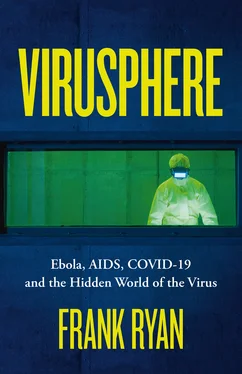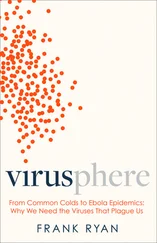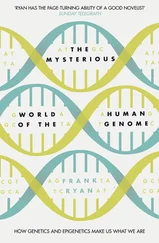2 Contents Cover Title Page Copyright Dedication Epigraph Introduction 1. What Are Viruses? 2. Coughs and Sneezes Spread Diseases 3. A Plague Upon a Plague 4. Every Parent’s Nightmare 5. A Bug Versus a Virus 6. A Coincidental Paralysis 7. Deadly Viruses 8. An All-American Plague 9. Lurker Viruses 10. How Flu Viruses Reinvent Themselves 11. A Lesson from a Machiavellian Virus 12. The Mystery of Ebola 13. The Mercurial Nature of the Zika Virus 14. A Taste for the Liver 15. Warts and All 16. Lilliputian Giants 17. Are Viruses Alive? 18. Inspiring Terror – and Delight 19. The Ecology of the Oceans 20. The Virosphere 21. The Origins of the Placental Mammals 22. Viruses in the Origins of Life 23. The Fourth Domain? Bibliography and References Index About the Book About the Author Also by Frank Ryan About the Publisher
Coughs and Sneezes Spread Diseases Contents Cover Title Page Copyright Dedication Epigraph Introduction 1. What Are Viruses? 2. Coughs and Sneezes Spread Diseases 3. A Plague Upon a Plague 4. Every Parent’s Nightmare 5. A Bug Versus a Virus 6. A Coincidental Paralysis 7. Deadly Viruses 8. An All-American Plague 9. Lurker Viruses 10. How Flu Viruses Reinvent Themselves 11. A Lesson from a Machiavellian Virus 12. The Mystery of Ebola 13. The Mercurial Nature of the Zika Virus 14. A Taste for the Liver 15. Warts and All 16. Lilliputian Giants 17. Are Viruses Alive? 18. Inspiring Terror – and Delight 19. The Ecology of the Oceans 20. The Virosphere 21. The Origins of the Placental Mammals 22. Viruses in the Origins of Life 23. The Fourth Domain? Bibliography and References Index About the Book About the Author Also by Frank Ryan About the Publisher
Historically, viruses were included with the so-called ‘microbes’ – tiny organisms that were originally discovered as the cause of infectious diseases in humans, animals and plants. Interestingly, there is a part of us that has long been intimately acquainted with microbes in general, and with viruses in particular. This is our inbuilt system of defences against infection: what doctors refer to as our immune system. It is perhaps as well that we possess this inbuilt immunological protection, because we inhabit a world that teems with microbes.
A veritable zoo of such microbes covers our skin and other surface membranes. Biologists call this the ‘human microbiome’. Although it might cause some of us to squirm a little just to acknowledge its existence, this secret world is no real threat to us. It is an intrinsic part of our being, comprising a variety of bacteria, as well as other microbial forms, that inhabit our surface skin, mouth and throat, nostrils and nasal cavities, and in the case of women, the genital passages. Our bodies are said to contain roughly 30 to 40 trillion cells – if you are mathematically inclined, this is 3 to 4 times 10 13– which comprises the sum total of living cells that make up our living tissues and organs. Meanwhile our ‘microbiome’, which amounts to all of the microbes that inhabit our skin, gut, oral and nasal passages and throat, and genital tract in women, accounts for some ten times as many microbial cells, comprising such organisms as bacteria, Archaea and protists. It is natural enough, given our awareness of past epidemics and day-to-day troublesome infections, to assume that such microbes are invariably harmful; but these microbes that make up our personal microbiomes are not hostile. Some simply live off us in commensal fashion without causing us any harm; while many others help to maintain our normal health. For example, the zoo of microbes that inhabit our large bowels, or colons, play an important beneficial role in our human nutrition – such as in helping us to absorb vitamin B12 – as well as helping to protect us from invasion of our digestive tract by pathological visitors. The bodies of this ‘colonic flora’ account for no less than 30 per cent of the bulk of our faecal waste.
There is also growing evidence that we benefit in a number of other ways from this microbial flora of our skin, and other abdominal cavities. This holistic realisation begs a relevant question: could viruses be a part of this human biome, capable of contributing to our human health? For any group of microbes to contribute to the nutrition or general well-being of a host, this would imply a lengthy period of symbiotic evolution with the same host. Immediately we even come to consider such a curious virus–host interaction, we are obliged to consider something profoundly different about viruses when compared to cellular symbionts, such as the bacterial flora of the human intestine or skin. Viruses inhabit the landscape of the host genome.
This means that viruses are certainly not going to contribute, for example, to human vitamin digestion. What it really implies is that, if viruses are to contribute in some way to host health – or indeed host evolution – that contribution is likely to be much more subtle, involving, perhaps in the human host, an interaction with our immunological defences, or more profoundly still, an interaction with our human genetic machinery – or most profound of all, changing our very human genome, the repository of our human heredity, buried deep in the nucleus of every human cell. If this were to happen, viruses would have contributed to what makes us human.
These are weighty questions. Perhaps many of my readers might be inclined to make the point that, so far as they are aware, only the less helpful kinds of viruses appear to have come their way.
In this book we shall explore the truly strange, and intriguing, world of viruses. We might make a start by dispelling a common misconception; many people tend to confuse viruses with bacteria. This is perfectly understandable since viruses, like bacteria, cause many of the common ailments that afflict us in our ordinary lives, and particularly so the fevers that beset the lives of our children. Family doctors deal with these common ailments on a day-to-day basis, and they tend to treat them in similar ways, with antibiotics for bacterial illnesses and vaccination programmes or antiviral drugs aimed at protecting kids from the common viral infections. It is little wonder that people are apt to confuse viruses with bacteria. What then is the difference between the two?
In fact there are major differences between bacteria and viruses. The most obvious difference is one of scale: most viruses are much smaller than bacteria. We readily grasp this if we take a closer look at what is going on during those coughs and sneezes that we recognise as the harbingers of that bothersome cold. While a few other viruses can cause an illness resembling a cold, the majority of colds are caused by a particular virus, which goes by the name of ‘rhinovirus’. If one harks back to the sneezing, snuffling and nose-blowing that are the familiar symptoms of that developing cold, the name rhinovirus is apt, since ‘rhino’ derives from the Greek word, rhinos , for nose. Rhinoviruses are the commonest virus infections to afflict humans worldwide, with a seasonal peak in the autumn and early winter. The more we learn about the rhinovirus, the more we witness how well-suited it is to its natural environment, and to its life cycle of infectious behaviour and spread.
The rhinovirus is exceedingly tiny, at about 18 to 30 nanometres in diameter. A nanometre, or nm, is one-thousand-millionth of a metre. This clearly tells us that a single rhinovirus organism – it is referred to as a ‘virion’ – is absolutely minuscule. In the evolutionary system of classification known as ‘taxonomy’, rhinoviruses are classed as a genus within the family of the ‘picornaviruses’, a word derived from pico for small, and rna , because the rhinovirus genome is made up of the nucleic acid RNA rather than the more familiar DNA. Let us put aside any discussion of these genetic molecules for the moment, but we shall return to consider some remarkable implications of RNA-based viral genomes in subsequent chapters.
Читать дальше












